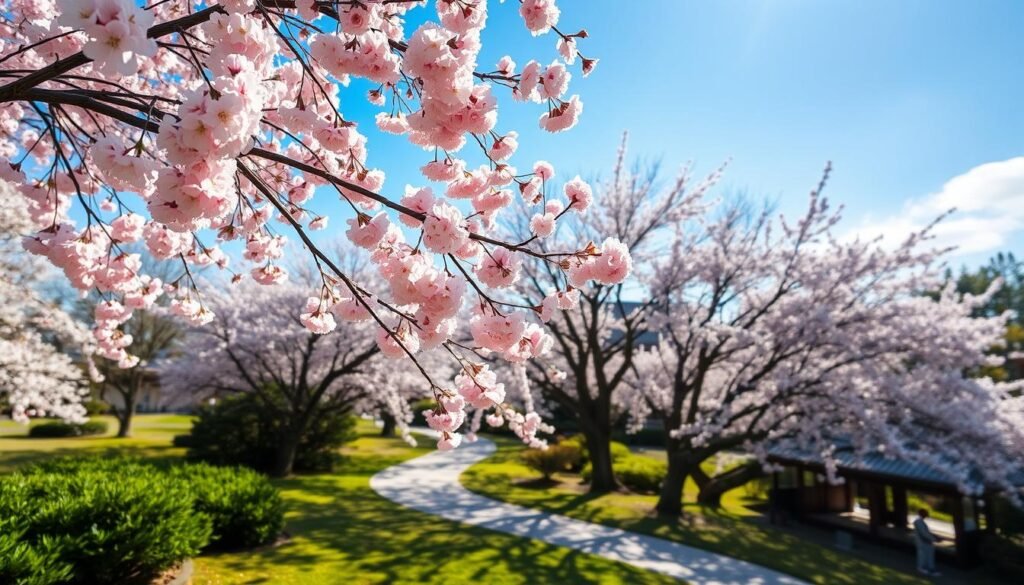Surprising fact: cherry blossoms often hit full bloom within a single week, and that narrow window draws crowds from around the world.
I plan my trips around four clear seasons, and the rhythm here makes the city feel new all year. Spring brings sakura and mild weather, while autumn offers crisp air and fiery foliage.
Rainy season runs from June to mid-July with frequent showers, and typhoon activity peaks in September with brief storms. I weigh showers and festival dates against prices and crowds when I choose dates.
Winter is cold and dry with sharp visibility and lower costs from mid-January through early March. Summer heats up but overflows with matsuri and fireworks, perfect if I crave lively nights over perfect temperatures.
Key Takeaways
- Spring (Mar–May) offers sakura and pleasant weather.
- Autumn (Oct–Nov) delivers peak foliage and clear days.
- June–mid-July brings rain; September can see short typhoons.
- Winter has low prices and fewer crowds outside holidays.
- Summer is hot but rich in festivals and night events.
Quick Answer: When I Think Tokyo Shines the Most
I find Tokyo at its brightest when the air is crisp and parks are painted—either pink or red. My straight-up pick: spring (March–May) and autumn (October–November). These seasons offer mild days, longer daylight, and standout scenery.
Late March into early April is usually the cherry blossom peak. November is the sweet spot for fiery foliage. Both are peak periods with larger crowds and higher rates, so I book flights and hotels 3–6 months ahead.
- I prefer spring for picnics under petals and autumn for crisp air and deep reds.
- If you can shift a few days, you often dodge the worst crowds while still catching the look you want.
- Alternatives: winter for savings and small crowds; summer for festivals and fireworks—plan around the heat.
“I tailor my choice to what matters most—photos, budget, festivals, or family timing.”
For a quick planning read, check when is the best time and I’ll expand on seasonal pros and cons in the next sections.
best time to visit tokyo
![]()
I weigh weather, crowds, and scenery when I pick dates for a Tokyo trip. For me, the defining qualities are pleasant days, iconic views, and manageable crowds. That turns into realistic target months instead of vague advice.
Why spring and autumn top my list: spring delivers sakura and mild weather, while autumn brings crisp air and vivid foliage. Both seasons usually offer the most comfortable temperatures and the clearest skies.
- I avoid heavy rain by steering clear of June–mid-July, and I leave buffer days for possible September typhoon disruptions.
- For lower prices I aim mid‑January to early March; airlines and hotels often drop rates after the holidays.
- I book 3–6 months ahead for peak months to lock in location and price without last‑minute stress.
| Goal | Target months | Weather note | Booking tip |
|---|---|---|---|
| Sakura | Late Mar–Early Apr | Mild, crowded | Book 3–6 months ahead |
| Foliage | November | Cool, clear | Book 2–4 months ahead |
| Budget travel | Mid‑Jan–Early Mar | Cold, dry | Good deals after holidays |
Packing note: I pack layers for spring and autumn, lightweight gear and an umbrella for rainy spells, and a warm coat for winter trips. A small buffer day in the schedule covers short storms or travel delays without wrecking plans.
Tokyo’s Weather and Seasons at a Glance
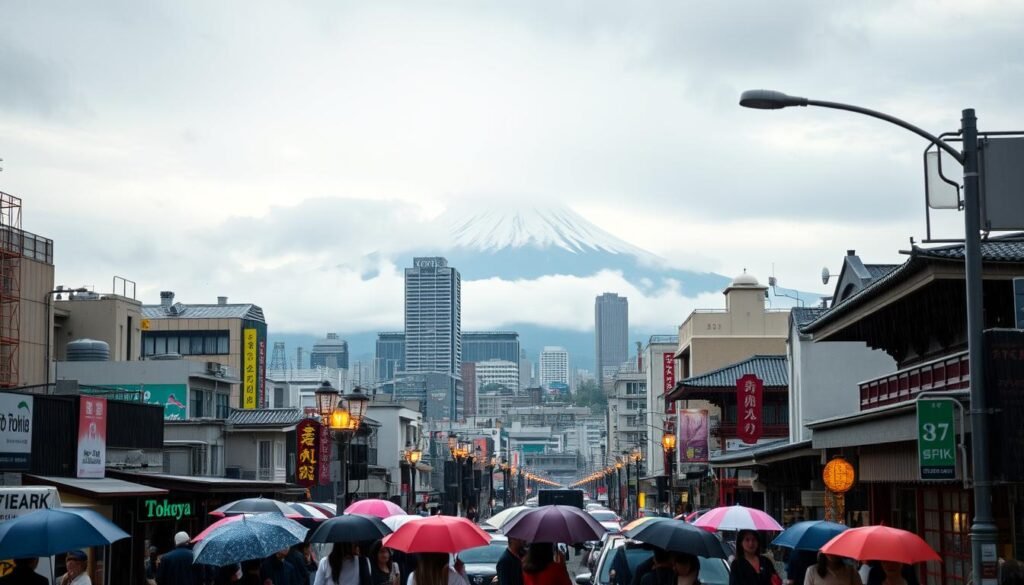
Knowing what each season feels like makes packing and pacing simple for me. Tokyo has four clear seasons, and each one changes daily rhythms, crowds, and the kind of weather I expect.
Four distinct seasons and what they feel like
Spring feels mild and often sunny. I pack layers for cool mornings and warmer afternoons.
Summer brings heat and high humidity, with long, sticky evenings that call for early starts and indoor breaks.
Autumn is cool and crisp—perfect for long walks. Winter is cold and dry, and the visibility is superb for skyline views.
Rainy season vs. typhoon season
The rainy season runs June to mid-July with frequent, on-and-off showers, not constant downpours. I carry a compact umbrella and plan indoor blocks.
September can bring 1–2 typhoons a year. Usually this means a day or two of heavy rain and strong winds, so I build buffer days into my schedule.
Typical temperatures and daylight by time of year
Typical temperatures: spring ~50–67°F, summer ~72–86°F (occasionally higher), autumn ~59–72°F, winter ~40–52°F. Humidity spikes in summer and eases in autumn and winter.
- Planning tip: start parks early on hot days and keep the forecast on your phone.
- Comfort guide: outdoor-heavy plans work best in spring and autumn; summer needs shade and midday indoor stops.
Spring in Tokyo (March–May): Cherry Blossoms and Mild Days
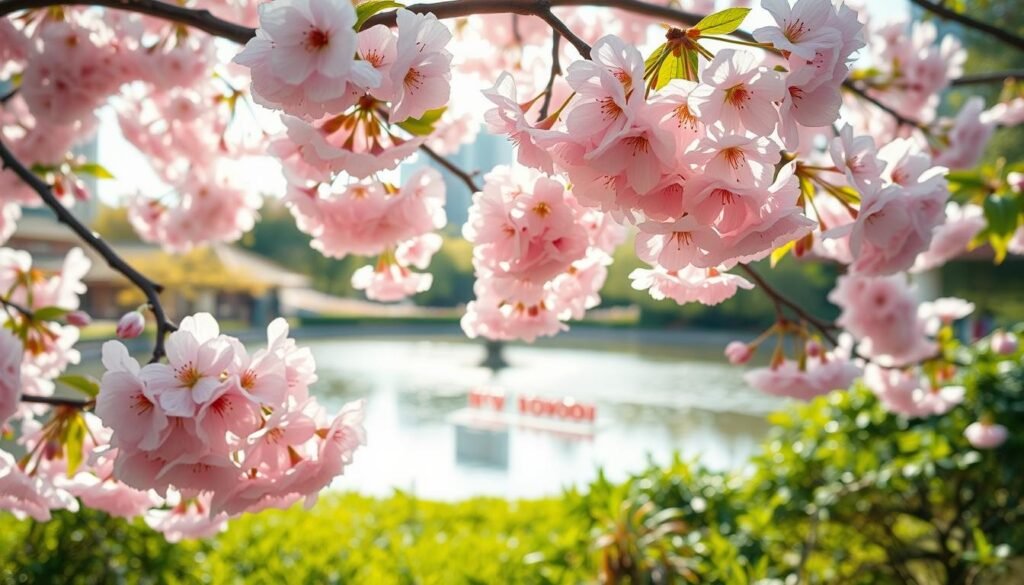
When spring arrives, mornings hold a cool bite while afternoons warm into easy wandering. The season usually brings 50–67°F (10–19°C) temperatures and longer days that make parks perfect for strolls.
Weather snapshot and daily feel
Cool mornings often need a light jacket. Afternoons are T-shirt friendly, so layers work best. I watch forecasts for wind and rain since a strong shower can strip blossoms fast.
Where and when the blooms peak
Cherry blossoms usually bloom from late March into mid-April, with full bloom often around Mar 28–Apr 4. I aim for Ueno Park, Chidorigafuchi, or Meguro River for classic hanami scenes. Bloom dates move a few days across the city, so I check multiple forecasts.
Golden Week and crowd tips
Golden Week (late April–early May) brings higher prices and packed trains. I book at least three months ahead and use sunrise visits, weekdays, or lesser-known spots like Kitanomaru Park to avoid the biggest crowds.
| Focus | Typical window | What I pack |
|---|---|---|
| Sakura peak | Late March–Early April | Layers, light jacket |
| Hanami day | Any sunny spring day | Compact picnic kit, blanket |
| Budget buffer | Book 3+ months ahead | Flexible schedule, indoor backups |
“I pair park walks with nearby temples or museums so a sudden shower doesn’t spoil the day.”
Summer in Tokyo (June–August): Hot, Humid, and Festival-Packed
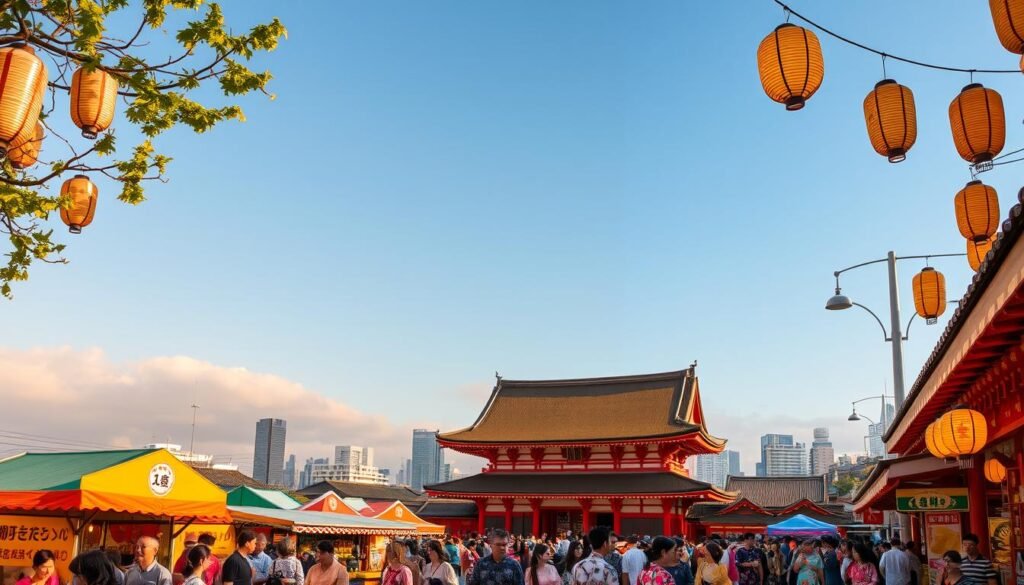
Summer in the city brings a humid pulse and nonstop festival buzz that reshapes my days. I expect warm temperatures around 72–86°F (22–30°C), with occasional spikes near 95°F (35°C).You can learn best-time-to-visit-iceland
Rainy season reality
The rainy season runs roughly June to mid-July and brings frequent, showery spells rather than all-day downpours. I front‑load museums, aquariums, and indoor art spaces for soggy hours and keep plans flexible.
Beat the heat and humidity
On hot humid days I start early, break midday in air‑conditioned cafés, then head out after dinner. Mornings are my best window for shrines and parks when the weather feels freshest.
Festivals, fireworks, and local vibes
Highlights include the Sumida River fireworks and Obon dances. These festivals offer yukata scenes and lively streets, but they attract big crowds—so I arrive early, bring a mat, and map my train route home.
My summer packing list
- Breathable fabrics and a backup tee
- Handheld fan, sunscreen, UV umbrella
- Electrolyte drinks and a compact umbrella for sudden rain
| Focus | Typical month | What I do |
|---|---|---|
| Coolest summer slice | June | Early starts, smaller crowds, better rates |
| Rainy season planning | June–mid‑July | Indoor backups and flexible slots |
| Festival nights | July–August | Arrive early, pack a mat, preplan transit |
“I treat summer as a lively, steamy stretch—schedule smart, stay cool, and you’ll see the city at its most festive.”
Autumn in Tokyo (September–November): Clear Skies and Fall Foliage
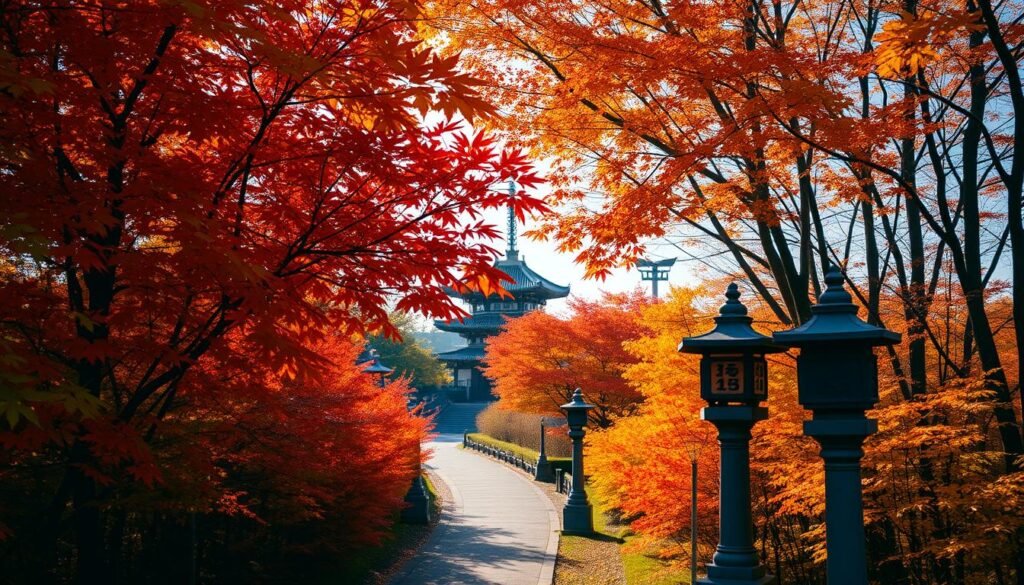
Autumn brings a crisp reset—clear skies, cooler air, and a steady parade of color across parks and avenues.
September can still feel warm and occasionally brings typhoons, so I keep plans flexible and tuck a couple of indoor backups into my schedule.
Typhoon watch and why late fall feels ideal
Early autumn has one or two short storms some years. I build buffer days and pick museums or tea houses as plan B when rain threatens.
When leaves turn and where I go for color
Leaves usually start changing in late October and peak in November. Typical autumn temperatures run about 59–72°F (15–22°C), and the season grows drier as it progresses.You can learn best-time-to-visit-costa-rica
I time strolls in Shinjuku Gyoen or Rikugien for weekdays or sunrise visits to avoid crowds. For day trips I love Nikko for temples framed in fiery color and Lake Kawaguchiko for maples with Mt. Fuji as a backdrop.
Layering tip: light coats and sweaters work well—mornings are brisk and evenings can feel chilly.
| Focus | Typical months | Why I pick it |
|---|---|---|
| Early autumn watch | September | Warm, typhoon risk; keep indoor backups |
| Leaf change | Late October | Clear skies, crisp air, great photography |
| Peak color | November | Drier days, vibrant foliage, plan weekdays |
“I pick late October for long walks and November for the richest color—both reward you with sharp skies and calm, bright days.”
Winter in Tokyo (December–February): Crisp Air, Illuminations, Lower Prices
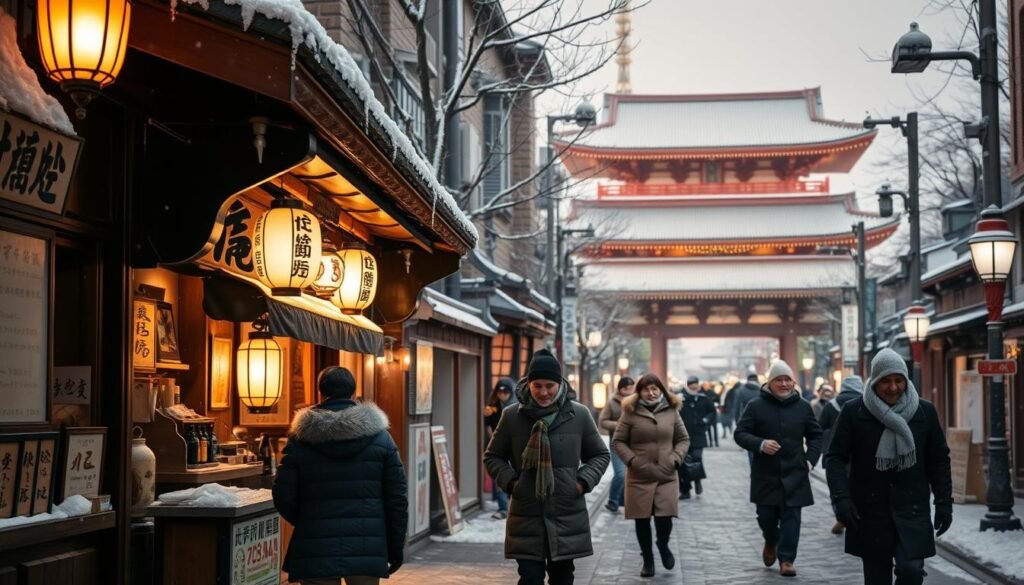
December through February feels quieter, with clear air and bright night displays. Typical temperatures sit around 40–52°F (4–11°C), and winter is one of the driest months with only about five rain or snow days a month.
Cold and dry: fewer rainy days, great visibility
Clear days make skyline shots and day trips easy. I love the sharp visibility—Mt. Fuji and city panoramas look their best on crisp winter mornings.
Holiday moments: Christmas markets and New Year traditions
Evenings glow with European-style Christmas markets and citywide illumination displays that draw locals and travelers alike. For New Year, I join hatsumode at Meiji Jingu and try seasonal snacks near shrines.
Why I go in winter: fewer crowds and better deals
Outside the holidays, crowds thin and prices fall. Mid-January through early March often has the cheapest flights and hotels in the year.
Warmth checklist and easy add-ons
My winter kit: down jacket, scarf, gloves, heat packs, and warm socks so I can linger at night displays without freezing.
- Snow options nearby: Nagano day trips or an onsen in Hakone if I want real snow and mountain views.
- Short daylight means earlier starts; I plan cafés and galleries for late afternoons before the illuminations.
“I favor winter for sharp views, cozy evenings, and the value you get after the holidays.”
| Focus | Month | Why I pick it |
|---|---|---|
| Illuminations & markets | Dec | Festive nights, lively displays |
| Quiet, low prices | Jan–Feb | Fewer crowds, cheaper rates |
| Snow day trips | Any winter month | Easy access to nearby ski towns and onsen |
Cherry Blossoms vs. Autumn Foliage: Choosing Your Dream Season
I often choose a season by picturing riverbanks crowded with petals or tree-lined streets glowing in red and gold.
Peak bloom vs. peak color: typical windows and flexibility
Cherry blossoms usually hit full bloom in late March to early April, with many years peaking around Mar 28–Apr 4. The window is short, so I build 2–3 flexible days into my plan.
By contrast, fall foliage unfolds from late October and often peaks through November. The color window is broader, which gives me more leeway if a warm week or early frost shifts the timing.
Crowds, prices, and photography considerations
I weigh trade-offs: spring brings hanami picnics and pastel scenes, while autumn offers crisp air and richer tones. Both seasons raise demand, so I expect higher prices and larger crowds.
- How I hedge: I shoot at sunrise, visit parks on weekdays, and walk quieter streets for cleaner shots.
- I favor wide river views and boat rides for cherry blossom panoramas, and golden-hour garden walks for foliage portraits.
- I track local forecasts and sakura reports so I can pivot to a nearby park with better blooms or color.
“A few flexible days and early starts let me chase petals or color without losing the trip.”
Prices, Crowds, and the Cheapest Months to Visit
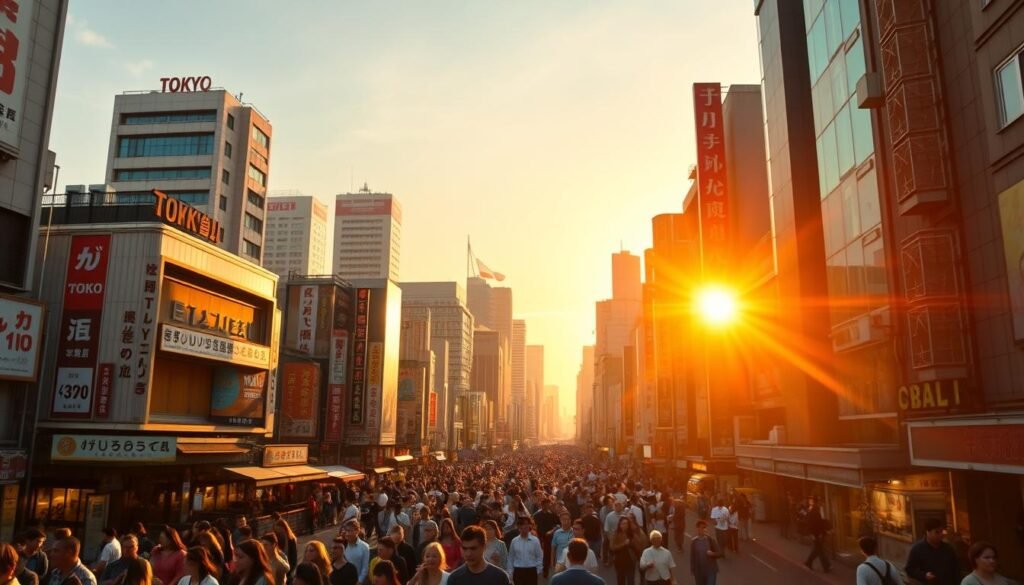
When I lock dates, prices and crowd forecasts steer my choices more than weather charts. I first mark the busiest windows, then look for quieter months that save money and stress.
Peak periods
Late March–early April and October–November are the busiest. Sakura weeks and fall foliage draw heavy demand, which pushes room rates and tour prices up.
- What I do: book 3–6 months ahead for preferred neighborhoods and avoid last-minute premiums.
- Crowd tip: visit parks at sunrise or on weekdays to dodge the worst crowds and get cleaner photos.
Cheapest stretch
Mid‑January to early March is my sweet spot for deals. Airfares and hotels dip, and the city feels quieter for museum days and long walks. If budget matters most, winter often gives the best value with clear skies.
Golden Week impact
Golden Week (late April–early May) creates a ripple across logistics. Trains, restaurants, and hotels can sell out fast. I either lock bookings early or shift dates by a few days to avoid the squeeze.
| Window | Effect | My action |
|---|---|---|
| Cherry & foliage peaks | High rates, heavy crowds | Book 3–6 months ahead |
| Mid‑Jan–Early Mar | Lower prices, light crowds | Flexible travel, midweek stays |
| Golden Week | Nationwide travel surge | Reserve trains and restaurants early |
“I use early starts, split‑shift sightseeing, and flexible airports to stretch my budget and avoid packed hours.”
For an extra planning read, I check a best time guide and watch festival calendars so month‑by‑month prices don’t surprise me.
Tokyo by Month: What I Expect and Plan For
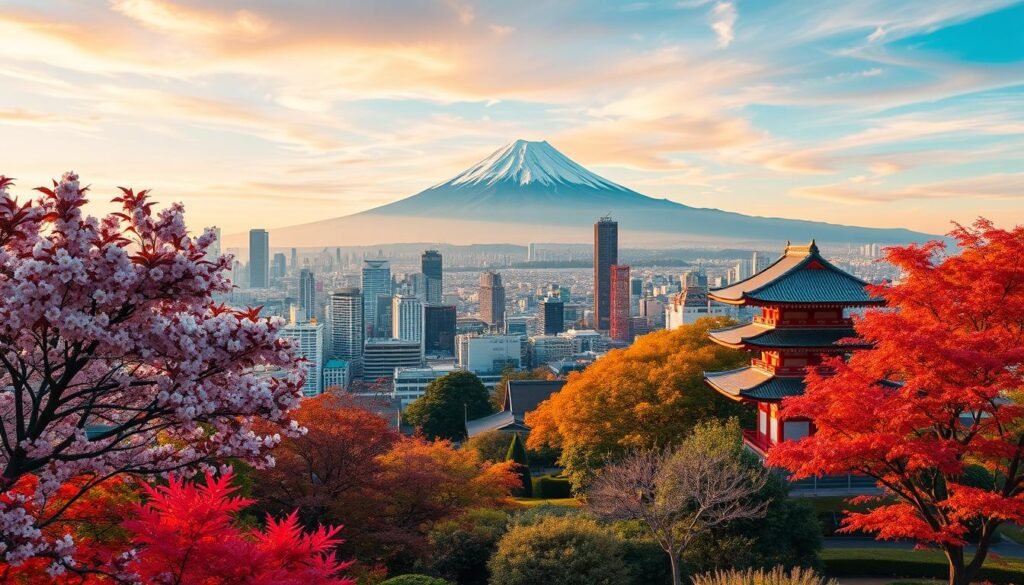
I map each month around a few anchor events and simple weather cues so days feel planned, not rushed.
Jan–Mar: clear skies, illuminations, and plum blossoms
January and February are the coldest months. I enjoy illuminations, lower crowds, and post‑New Year value.
Early March brings milder temperatures and plum blossoms. I pack warm outerwear and plan Hakone day trips for snowy mountain views.
Apr–Jun: cherry blossoms into the rainy shift
Late March–early April holds cherry blossoms and busy parks. May is pleasant and lighter on crowds.
June marks the start of the rainy season, so I add indoor museum blocks and a compact umbrella to my bag.
Jul–Sep: festivals, heat, and typhoon buffers
July–August are hot with festivals like Tanabata and the Sumida River fireworks. I carry a UV umbrella and hydrate often.
September needs a realistic typhoon buffer; I leave a spare day for altered plans.
Oct–Dec: crisp walks, foliage, and holiday displays
October offers outdoor days and early foliage. November is peak color—light coats work well.
December brings illuminations and Christmas markets. I swap layers for evenings and plan Nikko or local day trips for vivid scenery.
| Months | Key events | Packing nudge |
|---|---|---|
| Jan–Mar | Illuminations, plum blossoms | Warm coat, day trips to Hakone |
| Apr–Jun | Cherry blossoms, rainy season start | Layers, compact umbrella |
| Jul–Sep | Fireworks, Obon, typhoon watch | UV umbrella, light clothes, buffer day |
| Oct–Dec | Foliage peak, holiday displays | Light coat (Nov), warm outerwear (Dec) |
“I schedule flexible days around major displays and weather windows so a sudden shower or festival becomes part of the plan, not the problem.”
Festival and Events Calendar: Can’t-Miss Moments
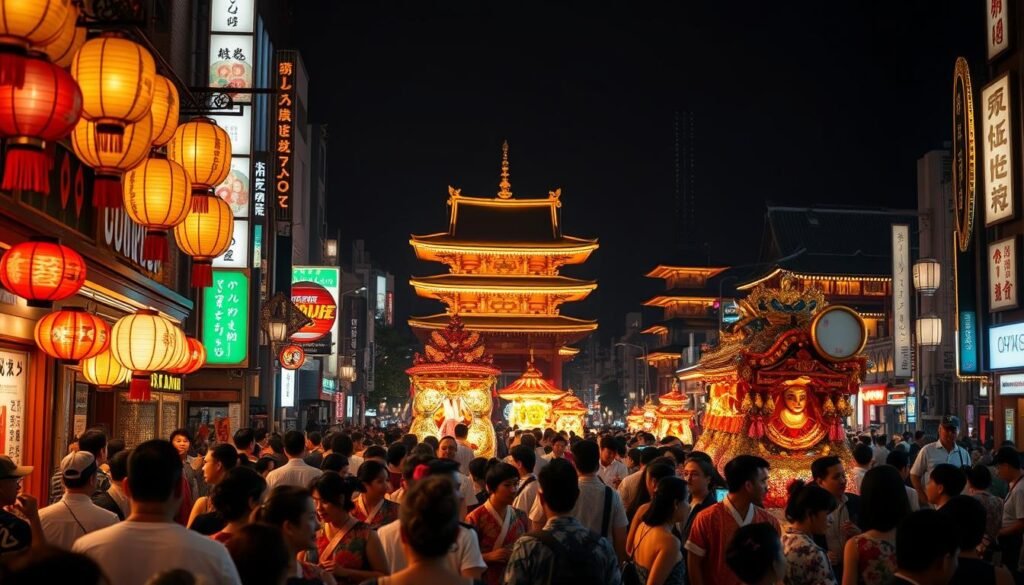
I build my itinerary around standout events so I can feel the city’s pulse when the streets glow and temples hum.
Spring highlights
I mark late May for Sanja Matsuri in Asakusa and mid‑April for wisteria tunnels at Ashikaga. Hitachi Seaside Park’s blue nemophila waves usually peak in mid‑April to early May. These festivals and blooms draw big crowds, so I arrive early.
Summer standouts
Early July brings Tanabata streamers, late July has the Sumida River fireworks, and mid‑August holds neighborhood Obon dances where locals wear yukata. For fireworks nights I line up vantage points well before sunset.
Autumn & winter favorites
October hosts Takayama’s float parades and Shibuya’s Halloween streets. December 2–3 is the Chichibu Night Festival and many illumination trails light the evenings. I add quiet recovery days after major events.
| Season | Notable events | Practical tip |
|---|---|---|
| Spring | Sanja Matsuri, wisteria, nemophila | Book weekends early; arrive at parks at dawn |
| Summer | Tanabata, Sumida fireworks, Obon | Map street routes; stake viewing spots early |
| Autumn/Winter | Takayama festival, Halloween, Chichibu | Balance busy days with quiet museum mornings |
“I curate festival windows so a single month can feel like a dozen new discoveries.”
Sumo Seasons in Tokyo: Best Months to Catch a Basho
I plan a sumo trip around the tournament calendar so a bout can anchor my days in the city. Tokyo hosts three Grand Tournaments each year at Ryogoku Kokugikan. Each basho runs 15 days in January, May, and September.
Grand Tournaments: January, May, September at Ryogoku
Ticket note: seats sell fast. I buy early and aim for lower ring-side tiers or mid-level boxes for the best balance of view and price.
How I plan tickets and a sumo-themed day out
My ideal day pairs the Sumo Museum, several matches, and chanko-nabe at a nearby ryotei. I arrive early to feel the atmosphere and tour the exhibits.
- I watch match schedules: top-division bouts come later in the day, so I plan transit around arena crowds.
- Etiquette: clap politely at bout ends, keep cameras discreet, and avoid loud interruptions during rituals.
- Nearby add-ons: Edo-Tokyo Museum or a Sumida River stroll round out the cultural itinerary.
| Month | Length | Season note |
|---|---|---|
| January | 15 days | crisp air; bundle up |
| May | 15 days | mild afternoons; light layers |
| September | 15 days | possible showers; pack a compact umbrella |
“I pad a day on either side of a basho for flexible travel and better ticket options.”
My Planning Timeline: Booking Windows, Weather Buffers, and What to Pack
I set booking alerts months ahead and watch the calendar for weather shifts.
For peak sakura and foliage windows I lock flights and hotels 3–6 months ahead. I usually set alerts six months out, then commit core bookings by the 3–4 month mark.
Booking rhythm and high-demand items
I pre-book fixed-slot attractions like sumo, TeamLab, and theme parks so a missed slot doesn’t derail a day. I prefer cancellation-friendly options in shoulder months so I can shift plans by a day if a storm pops up.
Flexible itineraries for rainy season and typhoon days
Rainy season (June–mid‑July) and September typhoon risk mean I build buffers.
Rule of thumb: add one extra day per week in June and September to absorb showers or a short typhoon delay.
I keep a short list of indoor alternates—museums, cafés, and shopping—near each neighborhood so rainy days stay useful.
Seasonal packing quick list
My packing is simple and seasonal. I pack for spring layers and picnic kit. Summer gear focuses on breathables, a UV umbrella, and electrolytes for heat and humidity.
For autumn I bring sweaters and a light coat. Winter gets a down jacket, gloves, and heat packs for crisp mornings and lower prices in mid‑January through early March.
| Focus | Action | Why it helps |
|---|---|---|
| Peak bookings | Alerts 6 months → lock by 3–4 months | Secures seats and rooms during high-demand months |
| Weather buffers | Add 1 extra day/week in June & September | Absorbs rain or a short typhoon with minimal disruption |
| Daily pacing | Split-shift days in summer; early starts in peak seasons | Beats crowds and avoids midday heat |
| On-the-ground prep | Preload Suica/PASMO and carry cancellation-friendly bookings | Saves minutes and keeps plans flexible |
“A small buffer and a short packing list let me enjoy more days, not worry about lost ones.”
Finally, when I plan a trip I often check guides like plan a trip to Japan for checklists and timing notes. That keeps my schedule tight but flexible across the year.
Conclusion
I decide trips by answering one simple question: what do I want most from the city this year?
I’ll recap my take: spring gives cherry blossoms (late March–early April) and mild days, autumn brings vivid foliage in November, and winter (mid‑Jan–early Mar) offers lower prices and lighter crowds. Summer is lively with festivals but calls for smart pacing in heat and humidity.
Plan around those months, book peak stays 3–6 months ahead, and add small buffers for rainy or typhoon weather. Match your priorities—photography, budget, family, or festivals—and pack by season so you arrive ready for long days or cozy displays.
Make your travel choices, then savor the parks, neighborhoods, and night displays at your pace.


